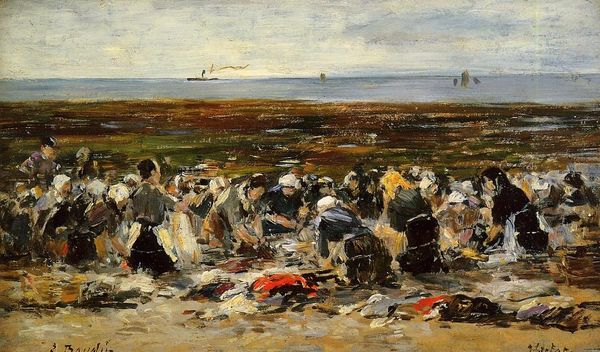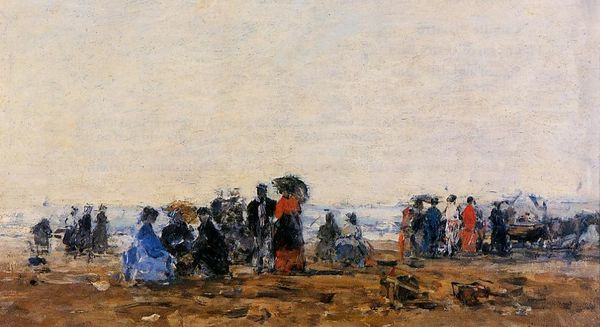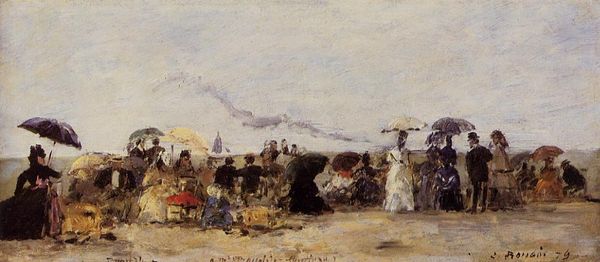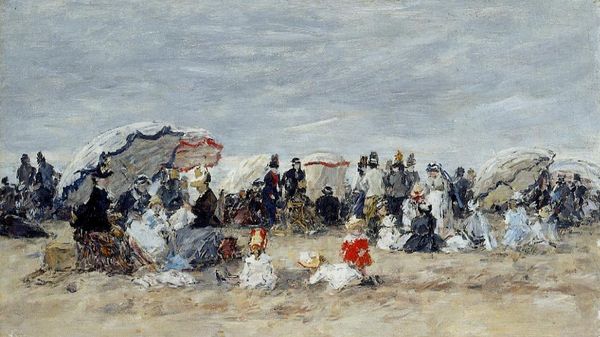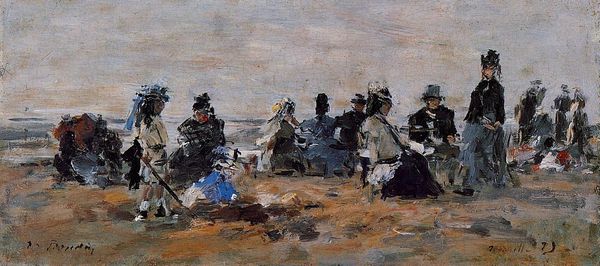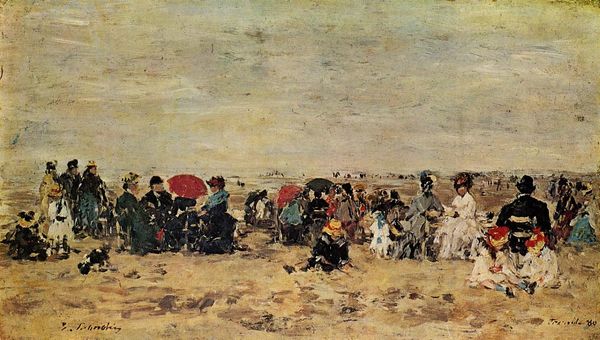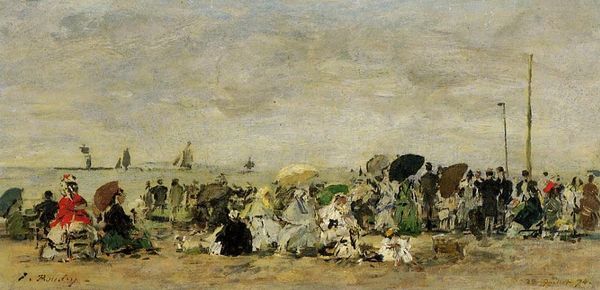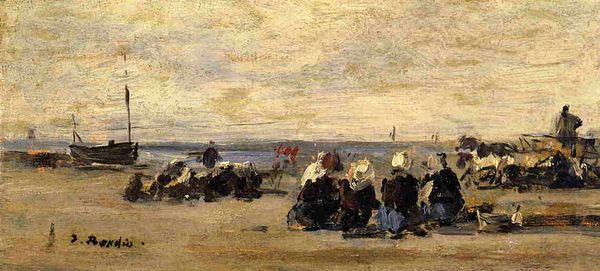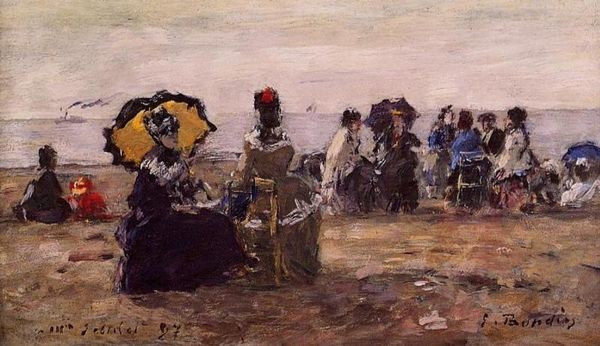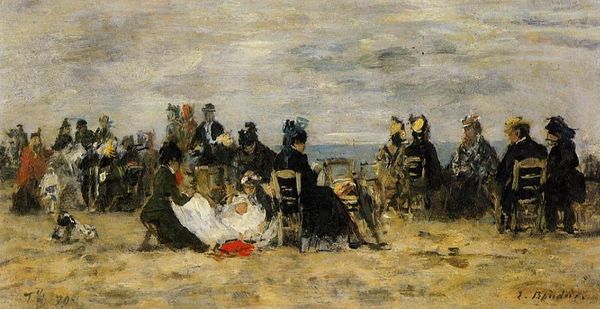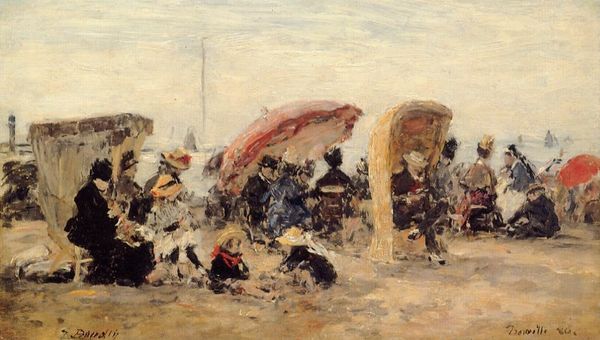
Copyright: Public domain
Curator: Standing before us, we have Eugène Boudin's "Etretat, Laundresses on the Beach, Low Tide," painted in 1892 using oil on canvas. It is an intimate portrayal of labor at the intersection of land and sea. Editor: There's a captivating haze in this scene. It feels less like witnessing a landscape and more like stepping into a memory of one, a fleeting moment suspended. The muted colors amplify that feeling, a blend of browns, creams, and greys dominated by that rocky cliff on the horizon. Curator: Boudin was dedicated to plein-air painting, which means he captured the immediacy of the light and atmosphere. This is quite clear when we consider how he rendered the group of laundresses toiling away on the beach; it’s more about the rhythm of work and the interaction with their environment than an individualized portrait. The focus here isn’t really on who these women are, but more about what they are doing. Editor: Absolutely, it speaks volumes about labor practices in 19th-century France. The physical demands placed upon these women are evident, aren’t they? Their bent postures tell tales of repetitive strain injuries from washing clothes by hand, day in and day out. Moreover, their clothing functions almost like a uniform, underscoring their collective identity as laborers bound together. Curator: These kinds of genre scenes were extremely popular among the burgeoning bourgeoisie who wanted art that spoke to their lived experiences and reflected back their values. One could consider it, if only slightly, exploitative—painting working-class figures but without actively improving the conditions or wages for the working classes. Editor: True, this kind of imagery allowed wealthy patrons to admire labor without acknowledging their implication within these asymmetrical relationships. So it isn't enough just to enjoy Boudin’s impressionistic style or landscape, we must ask what and who is truly being rendered as an aesthetic exercise. Curator: Precisely. By engaging with it through material conditions, labor dynamics, and broader consumer demands, Boudin’s "Etretat, Laundresses on the Beach, Low Tide" evolves into something deeper and allows us to question social hierarchies of the time. Editor: Boudin's skill in evoking atmosphere combined with the poignant social narrative indeed prompts important reflections on the intersections of labor, representation, and class in late 19th-century France. Curator: It offers a fascinating snapshot of Impressionism as more than just an aesthetic movement; instead, a cultural product.
Comments
No comments
Be the first to comment and join the conversation on the ultimate creative platform.
